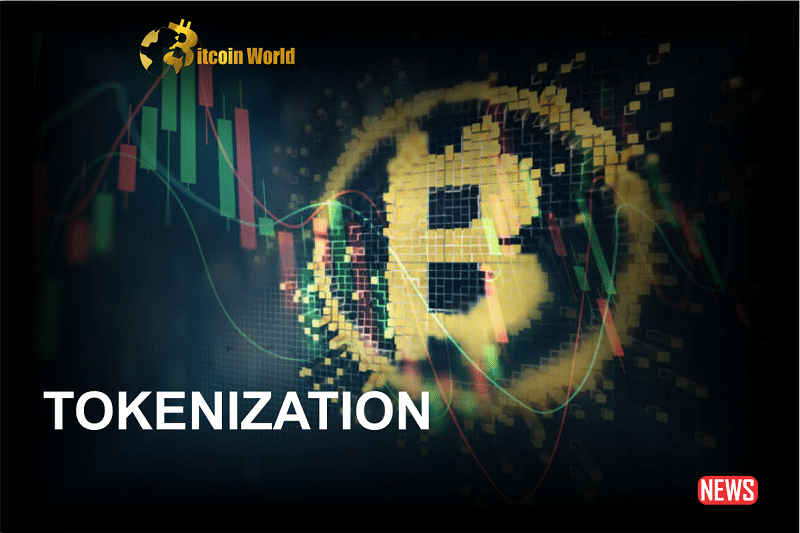Ever felt like the crypto world was a rollercoaster of hype and disappointment? You’re not alone. Remember the buzz around DeFi and the promise of democratized finance? Then came the crashes, the scandals… FTX and Celsius are just a couple of names that left a sour taste. But what if there’s a way to bring the excitement of crypto together with the stability of traditional finance? Enter: tokenizing real-world assets (RWAs).
What Exactly is Tokenization and Why Should You Care?
Imagine owning a fraction of a Picasso painting or a share in a prime piece of real estate, all represented by a digital token on a blockchain. That’s the power of tokenization. It takes tangible assets – from real estate and commodities to art and even intellectual property – and transforms them into digital tokens. Think of it as giving real-world assets a digital passport to the blockchain world.
Bridging the Gap: DeFi Meets TradFi
For a long time, the crypto world and traditional finance (TradFi) felt like separate universes. DeFi offered the allure of decentralization and innovation, but its volatility and lack of regulation often scared away the mainstream. Tokenization acts as a bridge, bringing the best of both worlds together:
- DeFi Benefits: Transparency, 24/7 trading accessibility, automated processes through smart contracts, and the ability to break down large assets into smaller, more affordable units (composability).
- TradFi Strengths: The stability of established asset classes, access to vast amounts of liquidity, and the potential for clearer regulatory frameworks.
Why is Everyone Talking About Tokenization Now?
It’s not just crypto enthusiasts who are excited. Major players in traditional finance are also taking notice. Think about it:
- Industry Buzz: Blockworks declared tokenization as “crypto’s theme of the year” for 2023.
- Tangible Growth: Tokenized gold has already crossed the billion-dollar market cap mark.
- Institutional Interest: Giants like Goldman Sachs, BlackRock, and Siemens are actively exploring how to represent assets on the blockchain.
- The Larry Fink Effect: Even BlackRock’s CEO, Larry Fink, has called tokenization “the next generation for markets.” That’s a significant endorsement!
What are the Potential Benefits of Tokenizing Real-World Assets?
The possibilities are vast. Here are a few key advantages:
- Increased Accessibility: Investing in high-value assets becomes accessible to a wider range of investors. No need to be a millionaire to own a piece of a luxury property.
- Enhanced Liquidity: Tokenized assets can be traded more easily and efficiently on blockchain-based platforms, unlocking liquidity that might be tied up in traditional markets.
- Greater Transparency: Blockchain’s inherent transparency provides a clear and auditable record of ownership and transactions.
- Streamlined Processes: Smart contracts can automate many of the cumbersome processes involved in traditional asset management, reducing costs and increasing efficiency.
Are There Challenges to Overcome?
Absolutely. While the potential is huge, there are hurdles to clear:
- Trust and Transparency are Key: The crypto industry needs to rebuild trust after recent failures. Tokenization providers must be transparent about the underlying assets.
- Avoiding Past Mistakes: Practices like relying on “contracts for difference” instead of holding the actual asset can leave investors vulnerable. We need to learn from the past.
- The Importance of Regulation: A clear and robust regulatory framework is crucial for building confidence and preventing illicit activities. The good news is that RWAs, representing existing stocks, bonds, and securities, fit neatly into existing regulatory structures.
How Can We Ensure Responsible Tokenization?
The success of tokenization hinges on doing it right. Here are some crucial steps:
- Full Disclosure: Tokenization platforms must be transparent about the assets backing their tokens. Investors need to know what they are buying.
- Prioritizing Real Assets: Focusing on tokenizing the actual underlying asset, rather than derivatives, provides greater security and investor protection.
- Embracing Regulation: Working proactively with regulators to establish clear guidelines will foster trust and encourage wider adoption.
- Consumer Protection First: Implementing measures to protect investors is paramount to building a sustainable and trustworthy tokenization ecosystem.
Is Mainstream Adoption on the Horizon?
The signs are promising. A recent EY survey revealed that over 57% of institutional investors are interested in investing in tokenized assets, with 40% planning to start within the next year or two. Furthermore, media mentions of tokenization have surged by over 200% recently, indicating growing public awareness and interest.
The Time to Act is Now
Tokenization isn’t just another crypto trend; it’s a potential game-changer. It offers a tangible path to bridge the gap between the innovative world of decentralized finance and the established structures of traditional finance. By embracing transparency, prioritizing security, and working within a sound regulatory framework, the crypto industry has a real opportunity to deliver on its promises and unlock the true potential of blockchain technology. The stage is set, the interest is growing – now is the time to build a responsible and thriving future for tokenized real-world assets.
Tokenizing real-world assets represents a significant leap towards mainstream crypto adoption. By merging the strengths of DeFi and TradFi, it offers a compelling vision for the future of finance. However, the industry must learn from past mistakes and prioritize responsible practices, robust regulation, and consumer protection to realize its full potential. With increasing interest from both institutional investors and the mainstream media, the opportunity is ripe for a new era of real-world blockchain applications. The future of crypto might just depend on getting this right. The clock is ticking.
Disclaimer: The information provided is not trading advice, Bitcoinworld.co.in holds no liability for any investments made based on the information provided on this page. We strongly recommend independent research and/or consultation with a qualified professional before making any investment decisions.


